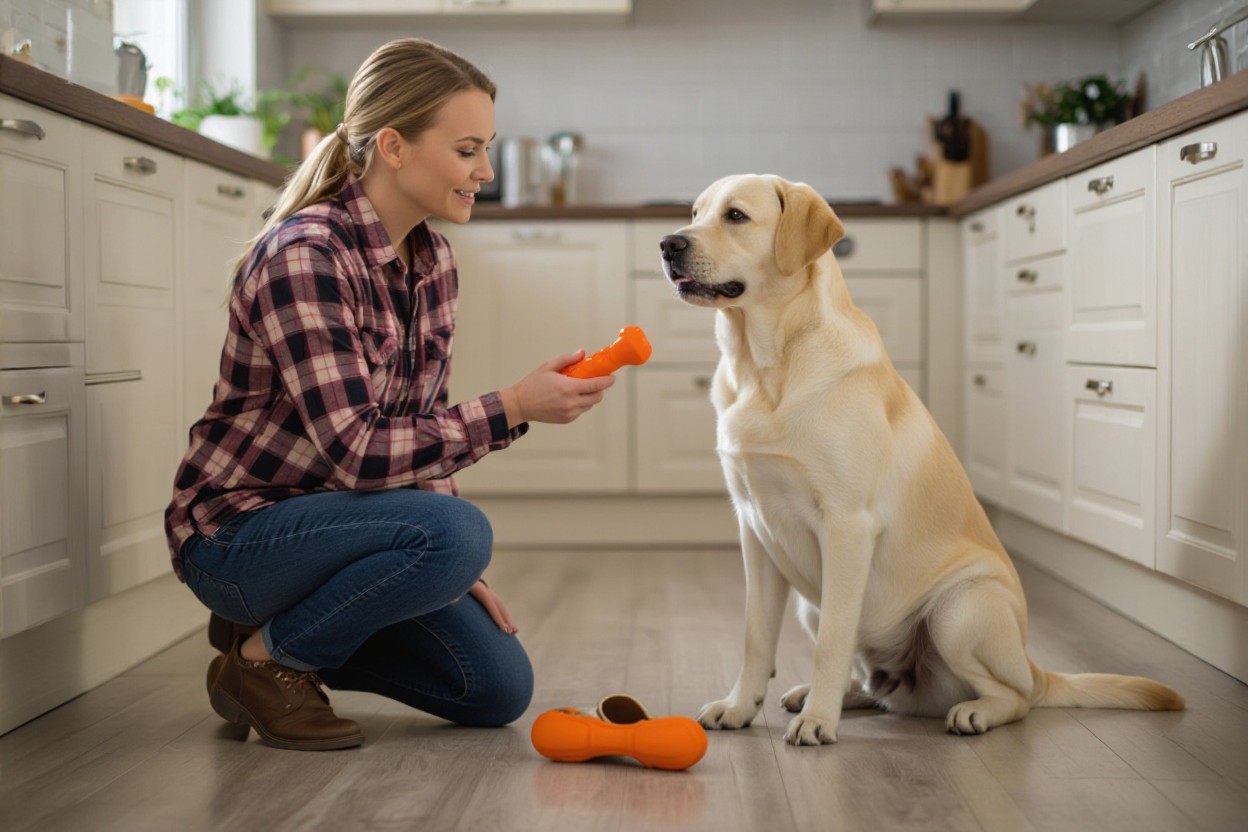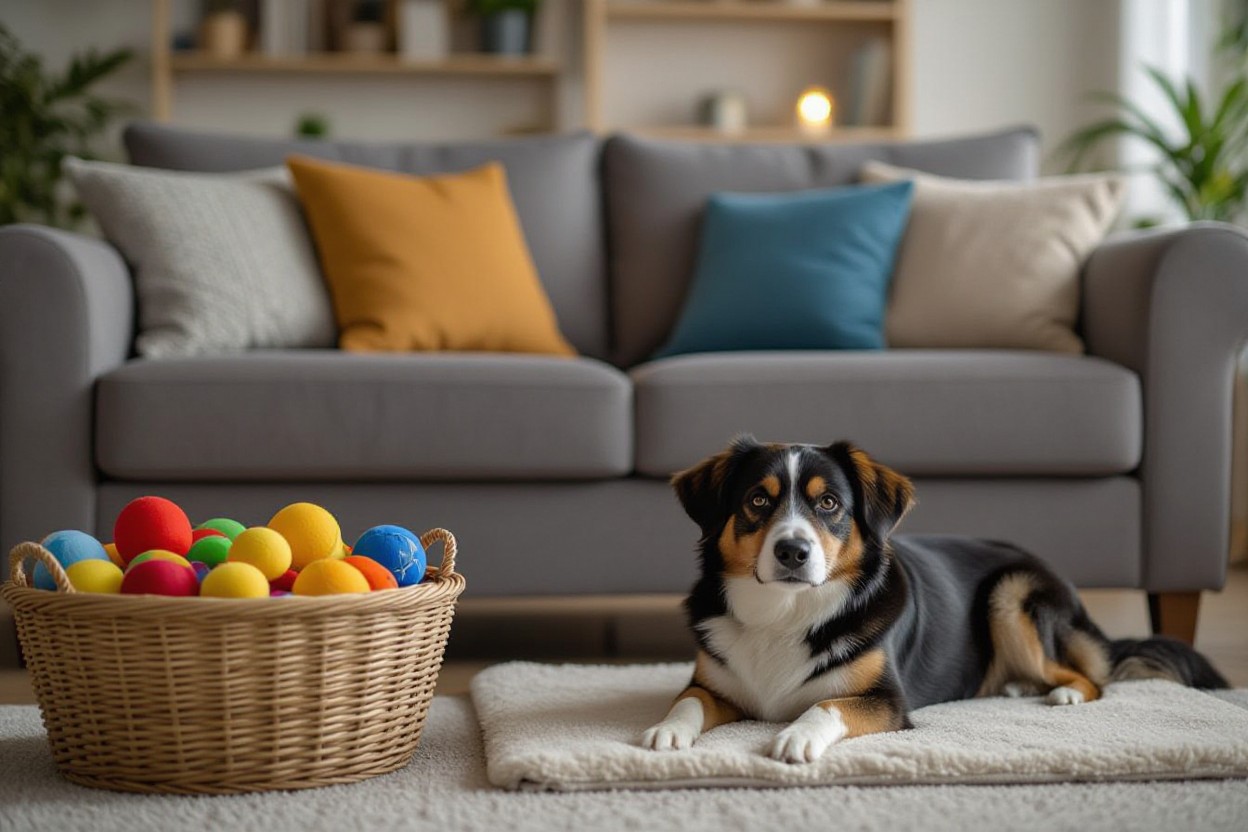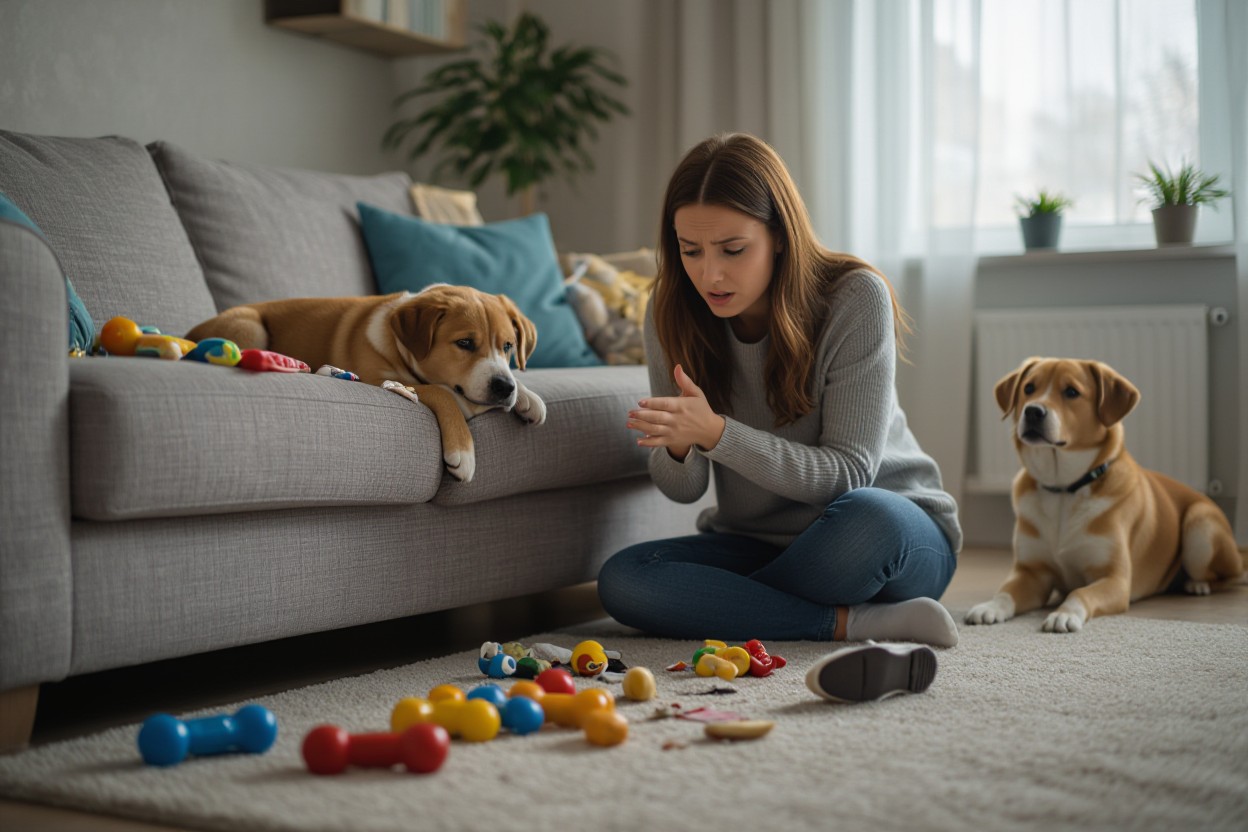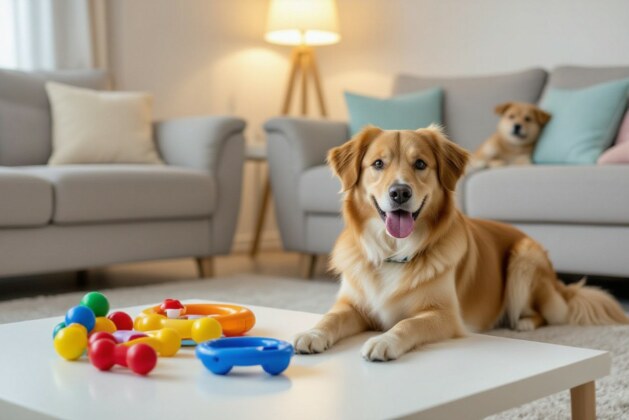Dogs often chew on household items out of boredom, teething, or anxiety, which can lead to damaged belongings and potential health risks for your pet. In this guide, I will share practical, effective strategies to help you redirect your dog’s chewing behavior towards appropriate toys and reduce this destructive habit. By understanding the underlying causes and providing positive reinforcement, you can create a safer, more harmonious environment for both you and your furry friend.
The Root Causes of Destructive Chewing
Understanding why your dog chews destructively is key to addressing the behavior effectively. Dogs often chew out of instinct, but beyond that, factors such as age, breed tendencies, and individual temperament strongly influence their habits. Puppies, for example, naturally explore their world by chewing, while certain breeds like Terriers or Retrievers may have higher energy levels and stronger chewing drives. Identifying whether chewing stems from a physical or emotional need allows you to tailor your approach for better results.
Behavioral Drivers: Boredom, Anxiety, and Teething
Bored dogs lacking mental or physical stimulation often turn to chewing as a coping mechanism. Anxiety, especially separation anxiety, can heighten destructive chewing as a stress response. In puppies, teething contributes significantly, with their gums sore and seeking relief, leading to excessive chewing on household items. Providing appropriate chew toys and engaging activities helps redirect this behavior constructively.
The Influence of Environment on Chewing Habits
Your dog’s environment plays a powerful role in shaping chewing behaviors. A home with easy access to tempting objects, inconsistent supervision, or limited safe spaces often results in increased destructive chewing. Changes in routine, such as a new baby or moving houses, can also raise stress levels, prompting your dog to chew more as an outlet.
Extending beyond access and routine, environmental enrichment can dramatically alter chewing patterns. Dogs confined to small spaces without variety in toys or interaction frequently focus on destructible household items for entertainment. Additionally, environmental factors like lingering food scents on objects or the presence of shoes and clothing attract dogs due to their strong olfactory senses. By strategically managing your dog’s surroundings—storing enticing items out of reach and providing diverse chew options—you can reduce destructive behavior substantially by preventing the triggers that lead to chewing in the first place.

Techniques to Redirect Chewing Behavior
Redirecting your dog’s chewing habits requires consistent effort and the right approach. By focusing your dog’s energy on acceptable objects and rewarding good choices, you create a clear boundary between off-limits items and approved chew toys. Combining redirection with engaging activities helps counter boredom and anxiety, two major triggers for destructive chewing. It’s about replacing unwanted behavior with positive alternatives and reinforcing those choices regularly to reshape your dog’s habits.
Positive Reinforcement Training Methods
Using positive reinforcement, such as treats and praise, every time your dog chooses the correct chew toy motivates them to repeat the desired behavior. For instance, when your dog grabs a chew bone instead of your shoes, immediately reward them with a treat or enthusiastic verbal encouragement. This method builds a strong connection between the action and the reward, making it more likely your dog will choose appropriate items over destructive chewing. Consistency and timing of the rewards play a fundamental role in reinforcing these good habits.
Providing Appropriate Chew Alternatives
Offering an array of suitable chew toys tailored to your dog’s size, age, and chewing strength can significantly reduce unwanted chewing. Durable rubber toys, flavored dental chews, or interactive puzzle toys satisfy their natural urge without damaging household items. Rotate these toys periodically to maintain your dog’s interest and prevent boredom. When opting for alternatives, prioritize options that support dental health and mental stimulation to address both physical and cognitive needs.
Expanding on chew alternatives, I suggest considering items like Kong Classic toys filled with peanut butter or freeze-dried treats, which engage your dog longer while reducing destructive tendencies. For aggressive chewers, tougher options like Nylabone or antler chews provide resilience without splintering or breaking apart. Chewing also helps with teething in puppies, so softer rubber toys specifically designed for young dogs can soothe sore gums effectively. Offering multiple types and textures encourages exploratory chewing and ensures your dog doesn’t get bored of the same toy, supporting long-term behavior modification.

Creating a Chew-Proof Home Environment
Adjusting your living space to be less appealing targets for chewing significantly reduces your dog’s destructive habits. I recommend starting with an honest room-by-room evaluation to spot vulnerable items such as cords, shoes, and furniture edges. Placing protective covers or cord organizers on wires can prevent accidental shock and discourage your dog from gnawing on them. Consider relocating easily chewed items to high shelves or closed cabinets. The goal is to minimize temptation and create a safe, structured environment where your dog isn’t left testing boundaries with your belongings.
Dog-Proofing Strategies for Common Areas
In living rooms and kitchens, making changes like securing rugs with non-slip pads and using baby gates to block off rooms can help control your dog’s access. I also suggest replacing chewing-prone furniture materials with less appealing options such as leather or tightly woven fabric. In addition, toys and chews should be strategically placed to redirect focus onto appropriate items. Always keep areas clutter-free—piles of laundry or magazines can become an irresistible buffet for a bored or anxious dog.
Managing Access to Tempting Items
Limiting your dog’s opportunity to chew on forbidden objects means taking proactive steps like locking away shoes, remote controls, and children’s toys. I’ve found that providing a designated space, such as a crate or playpen stocked with approved chew toys, can serve as a valuable alternative. Using deterrent sprays on furniture or doorways can further reduce unwanted exploration. This approach helps you stay one step ahead, minimizing the risk of destructive chewing when you aren’t constantly supervising.
Expanding on managing access, using consistent routines—like immediately putting away all tempting items after use—can retrain your household’s habits. Some owners utilize tech solutions like pet cameras to monitor behavior in real time, allowing quick intervention before chewing escalates. Also, incorporating puzzles or treat-dispensing toys keeps your dog mentally stimulated and less inclined to seek out forbidden items. By combining physical barriers, environmental cues, and engaging alternatives, you can substantially lower the frequency of destructive chewing episodes in your home.
Enriching Your Dog’s Life Beyond Chewing
Diversifying your dog’s daily experiences reduces the need to resort to destructive chewing. By introducing new challenges and engaging activities, you can channel your dog’s energy and curiosity into positive outlets. This approach not only keeps your dog busy but also strengthens your bond and enhances overall well-being. Enrichment goes beyond simple play, offering mental exercise, social connections, and variety that stave off boredom and anxiety, which are often the driving forces behind unwanted chewing behaviors.
Mental and Physical Stimulation Strategies
Activities like puzzle feeders and obedience training sessions sharpen your dog’s intelligence while wearing off extra physical energy. Rotating toys or introducing scent games taps into natural instincts, maintaining your dog’s interest and engagement. Daily walks that vary in route, or agility exercises, further challenge their body and mind. These are proven approaches to reduce destructive tendencies by satisfying your dog’s need for stimulation and purpose.
The Role of Socialization and Interaction
Dogs thrive with regular interaction not only with you but also with other pets and people. Social play sessions, dog parks, or supervised meetup groups offer outlets for energy and practice in communicating with other dogs. This interaction can lessen anxiety-related chewing by providing emotional release and learning opportunities. Introducing your dog to diverse social settings builds confidence and reduces stress triggers that often cause chewing out of nervousness.
Expanding on socialization, structured interactions teach your dog appropriate behavior and impulse control, creating a more balanced temperament. Studies show that dogs exposed to varied social environments early on are less prone to anxiety-driven destructive behaviors. Encouraging calm, positive encounters with unfamiliar dogs, visitors, or family members helps reduce fear and boredom. These positive experiences foster relaxation, which diminishes compulsive chewing as a stress-coping mechanism.

When to Seek Professional Help
Occasionally, chewing issues go beyond typical puppy behavior or lack of enrichment. If your dog’s chewing escalates despite your best efforts, or if it’s accompanied by other troubling signs like aggression or withdrawal, professional guidance becomes valuable. You might observe your dog obsessively chewing objects even after ample exercise and mental stimulation, which often signals an underlying behavioral or anxiety-related issue. Initial attempts with training and environmental changes might fall short for such cases. Recognizing when to ask for help can prevent further damage and stress for both you and your pet.
Identifying Signs of Anxiety or Behavioral Issues
When destructive chewing coincides with pacing, excessive barking, or restlessness, anxiety might be at play. Dogs showing sudden changes in appetite, trembling, or avoidance behaviors often need evaluation beyond routine discipline. These symptoms sometimes indicate separation anxiety, fear responses, or compulsive disorders, all influencing chewing. Noticing if chewing intensifies during specific triggers—like alone time or loud noises—helps pinpoint whether emotional distress fuels the habit. Acting early by tuning into these signs lets you approach the problem with a behavioral professional, aiming for targeted relief rather than generalized training.
Finding the Right Trainer or Behaviorist
Choosing a qualified professional involves more than just certification; experience with anxiety-related behaviors and positive reinforcement techniques matters most. Trainers using aversive methods might worsen your dog’s stress, leading to increased destructive behaviors. Look for someone certified by reputable organizations like the International Association of Animal Behavior Consultants (IAABC) or the Certification Council for Professional Dog Trainers (CCPDT). Reading reviews, requesting initial consultations, and discussing their approach to chewing and anxiety can reveal if their style aligns with your goals and your dog’s needs.
Beyond certifications, I suggest checking if the trainer collaborates closely with veterinarians or applies evidence-based methods tailored to your dog’s history. Some trainers offer behavior modification plans incorporating counter-conditioning and desensitization, which often prove more effective for anxiety-driven chewing than mere obedience commands. In-depth experience with cases similar to yours—such as separation anxiety or compulsive chewing—usually results in faster progress and reduced relapse rates. Don’t hesitate to ask for case studies or references that showcase their success in managing complex chewing issues.
Final Words
Considering all points, I believe the key to stopping your dog from chewing everything in the house lies in understanding their needs and providing appropriate alternatives. By offering plenty of exercise, mental stimulation, and durable chew toys, you can redirect their energy positively. Consistent training and supervision also play vital roles in shaping your dog’s behavior. If you stay patient and attentive, you’ll create a harmonious environment where your dog feels fulfilled and your belongings remain safe.





Leave a comment